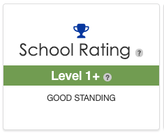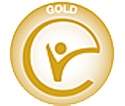|
What is RSV? Respiratory syncytial virus (RSV) is a common respiratory virus that most people recover from in about one to two weeks. However, RSV can be serious, especially for infants and older adults. RSV is the most common cause of bronchiolitis (inflammation of the small airways in the lung) and pneumonia (infection of the lungs) in children younger than 1 year of age in the United States. Almost all children will have had an RSV infection by their second birthday. What are the symptoms? Symptoms of RSV include: runny nose, a decrease in appetite, coughing, sneezing, fever and wheezing. These symptoms usually appear in stages and not all at once. In very young infants with RSV, the only symptoms may be irritability, decreased activity and breathing difficulties. How long does this disease last? An individual usually gets sick within 2-8 days after being infected. The contagious period is variable, from the day before symptoms until 3 to 8 days or longer; may last up to 3 to 4 weeks. How is RSV spread? Droplet: Virus droplets from a cough or sneeze land in the eyes, nose or mouth, touching a surface that has the virus on it (ex. a doorknob), then touching the face before washing your hands, and direct contact with the virus such as kissing the face of a child with RSV. RSV can survive for many hours on hard surfaces like tables and crib rails, whereas it typically lives on soft surfaces like tissues and hands for shorter amounts of time. People infected with RSV are usually contagious for 3 to 8 days. However, some infants and people with weakened immune systems can continue to spread the virus even after they stop showing symptoms for as long as 4 weeks. Who is at risk for RSV infection? Most persons infected with RSV will have mild illness and will recover in 1 to 2 weeks. However, some people, are more likely to have severe RSV infection that requires hospitalization. Examples of severe infections include bronchiolitis and pneumonia. Chronic health problems such as asthma can be worsened by RSV infection which may trigger asthma attacks, and people with congestive heart failure may also experience more severe symptoms triggered by RSV. What preventive measures and treatments are available?
What should schools do?
What are recommendations for exclusion? No exclusion unless febrile or other symptoms meeting exclusion criteria are present. For more information, visit RSV (Respiratory Syncytial Virus) | CDC or RSV in Infants and Young Children | CDC. ¿Qué es el RSV? El virus sincitial respiratorio (RSV) es un virus respiratorio frecuente del que la mayoría de las personas se recupera en aproximadamente una o dos semanas. Sin embargo, el RSV puede ser grave, especialmente para bebés y adultos mayores. RSV es la causa más frecuente de bronquiolitis (inflamación de las vías respiratorias pequeñas en los pulmones) y neumonía (infección de los pulmones) en niños menores de 1 año en los Estados Unidos. Casi todos los niños habrán tenido una infección por RSV antes de su segundo cumpleaños. ¿Cuáles son los síntomas? Los síntomas del RSV incluyen: secreción nasal, disminución del apetito, tos, estornudos, fiebre y sibilancias. Estos síntomas generalmente aparecen por etapas y no todos a la vez. En bebés muy pequeños con RSV, los únicos síntomas pueden ser irritabilidad, disminución de la actividad y dificultad para respirar. ¿Cuánto tiempo dura esta enfermedad? Una persona generalmente se enferma en el plazo de 2 a 8 días posteriores a la infección. El período de contagio es variable, desde el día anterior a los síntomas hasta 3 a 8 días o más; puede durar hasta 3 a 4 semanas. ¿Cómo se transmite el RSV? Microgotas: Las microgotas de virus de la tos o el estornudo caen en los ojos, la nariz o la boca, tocan una superficie que tiene el virus (por ejemplo, el picaporte de una puerta), después se toca la cara antes de lavarse las manos y el contacto directo con el virus, como besar la cara de un niño con RSV. RSV puede sobrevivir durante muchas horas en superficies duras como mesas y rieles de cuna, mientras que normalmente vive en superficies blandas como pañuelos y manos por períodos de tiempo más cortos. Las personas infectadas con RSV generalmente son contagiosas durante 3 a 8 días. Sin embargo, algunos bebés y personas con sistemas inmunológicos debilitados pueden continuar transmitiendo el virus incluso después de que dejen de tener síntomas hasta por 4 semanas. ¿Quién está en riesgo de infección por RSV? La mayoría de las personas infectadas con RSV tendrán una enfermedad leve y se recuperarán en 1 a 2 semanas. Sin embargo, algunas personas tienen más probabilidades de tener una infección grave por RSV que necesite hospitalización. Los ejemplos de infecciones graves incluyen bronquiolitis y neumonía. Los problemas médicos crónicos, como el asma, pueden empeorar con la infección por RSV, lo que puede desencadenar ataques de asma, y las personas con insuficiencia cardíaca congestiva también pueden tener síntomas más graves provocados por RSV. ¿Qué medidas preventivas y tratamientos existen?
¿Qué deben hacer las escuelas?
¿Cuáles son las recomendaciones para la exclusión?
Sin exclusión a menos que haya síntomas febriles u otros que cumplan los criterios de exclusión. Para obtener más información, visite RSV (Respiratory Syncytial Virus) | CDC o RSV in Infants and Young Children | CDC. Comments are closed.
|
Archives
June 2024
|





 RSS Feed
RSS Feed




